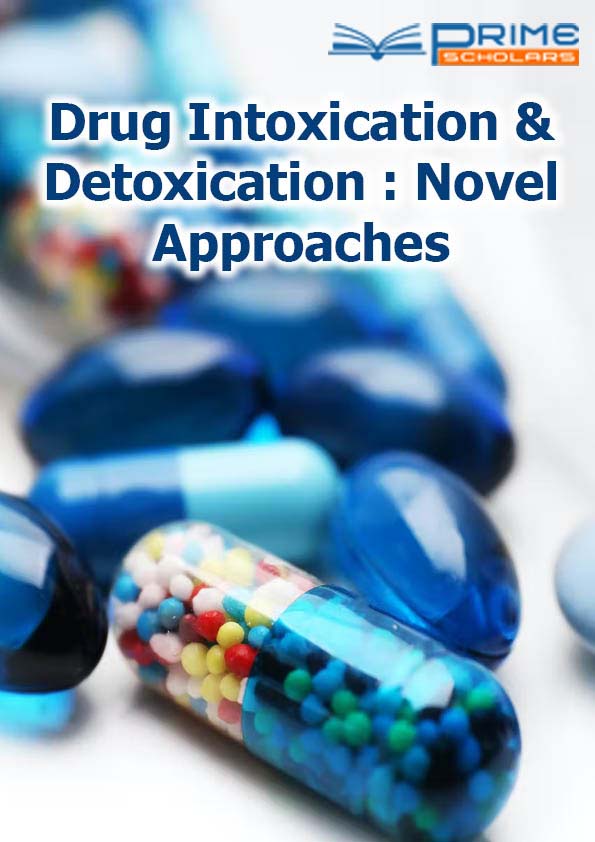Commentary - (2025) Volume 6, Issue 2
Unlocking the Potential of Bioavailability: Enhancing Drug Efficacy and Patient Outcomes
John Walker*
Department of Drug Discovery, Duke University, USA
*Correspondence:
John Walker, Department of Drug Discovery, Duke University,
USA,
Email:
Received: 14-May-2024, Manuscript No. DIDNA-24-19870;
Editor assigned: 16-May-2024, Pre QC No. DIDNA-24-19870 (PQ);
Reviewed: 30-May-2024, QC No. DIDNA-24-19870;
Revised: 13-Jun-2025, Manuscript No. DIDNA-24-19870 (R);
Published:
20-Jun-2025, DOI: 10.36648/DIDNA.6.2.61
Description
In the realm of pharmacology and medicine, the concept of bioavailability holds significant importance in determining the effectiveness of drug therapies and their impact on patient health outcomes. Bioavailability refers to the fraction of an administered dose of a drug that reaches systemic circulation in an active form, thus exerting its intended pharmacological effect. Understanding and optimizing bioavailability is essential for maximizing therapeutic efficacy, minimizing adverse effects and ensuring predictable drug responses. In this article, we delve into the intricacies of bioavailability, exploring its significance, factors influencing it and strategies for enhancing drug bioavailability. When a drug is administered via oral, intravenous, intramuscular or other routes, only a fraction of the dose actually reaches systemic circulation and becomes available for distribution to target tissues or organs. Variations in bioavailability can result in differences in drug absorption, distribution, metabolism and elimination, leading to variability in drug efficacy and patient responses. The route by which a drug is administered plays a significant role in determining its bioavailability. Drugs administered via intravenous injection typically exhibit complete bioavailability, as they bypass the first-pass metabolism and are rapidly distributed into systemic circulation. In contrast, drugs administered orally or via other routes may undergo extensive first-pass metabolism in the liver, reducing their bioavailability. The formulation of a drug, including its dosage form, excipients and delivery system, can impact its bioavailability. Factors such as particle size, solubility and dissolution rate influence the rate and extent of drug absorption from the gastrointestinal tract. Formulation strategies such as nanotechnology, lipid-based formulations and sustained-release formulations can enhance drug solubility, stability and absorption, thereby improving bioavailability. Small, lipophilic molecules tend to exhibit higher bioavailability due to their ability to penetrate cell membranes more readily, whereas large, hydrophilic molecules may face greater barriers to absorption. Concurrent use of multiple drugs can impact the bioavailability of individual medications through drug-drug interactions. Interactions involving inhibition or induction of drug-metabolizing enzymes, transporters or binding proteins can alter the absorption, distribution, metabolism or excretion of drugs, leading to changes in their bioavailability and therapeutic effects. Prodrugs are inactive or less active derivatives of drugs that undergo enzymatic or chemical conversion to their active form following administration. Prodrug design can enhance drug stability, solubility and membrane permeability, leading to improved bioavailability and therapeutic efficacy. Formulation technologies such as lipid-based formulations, nanoparticle delivery systems and micelle formulations can enhance drug solubility, stability and absorption, thereby improving bioavailability. These delivery systems protect drugs from enzymatic degradation, facilitate transport across biological barriers and enable site-specific drug delivery to improve therapeutic efficacy. Co-administration of drugs with absorption enhancers, such as surfactants, bile salts or permeation enhancers, can improve drug absorption and bioavailability by enhancing intestinal permeability and facilitating drug transport across epithelial membranes. Bioavailability plays a central role in determining the efficacy, safety and therapeutic outcomes of medications, influencing their pharmacokinetic and pharmacodynamics properties within the body. Understanding the factors influencing bioavailability and employing strategies to optimize drug delivery and formulation are essential for maximizing therapeutic efficacy while minimizing adverse effects. As researchers continue to explore novel approaches to enhancing bioavailability, the future holds immense promise for innovative drug delivery systems, formulation technologies and personalized medicine approaches tailored to individual patient needs. By harnessing the power of bioavailability, we can unlock new frontiers in drug development and therapy, improving patient care and advancing the practice of medicine.
Citation: Walker J (2025) Unlocking the Potential of Bioavailability: Enhancing Drug Efficacy and Patient Outcomes. Drug
Intox Detox: Novel Approaches. 6:61.
Copyright: © 2025 Walker J. This is an open-access article distributed under the terms of the Creative Commons Attribution
License, which permits unrestricted use, distribution, and reproduction in any medium, provided the original author and source
are credited.
